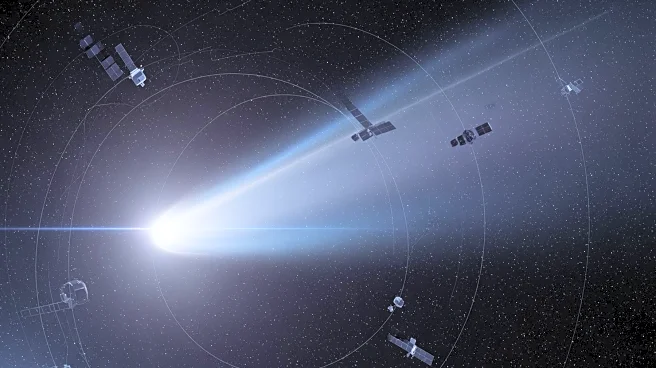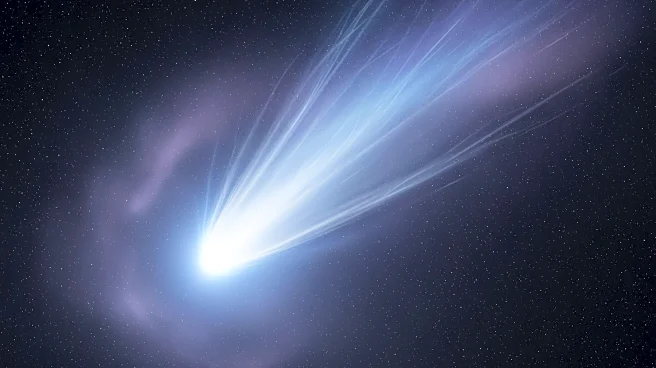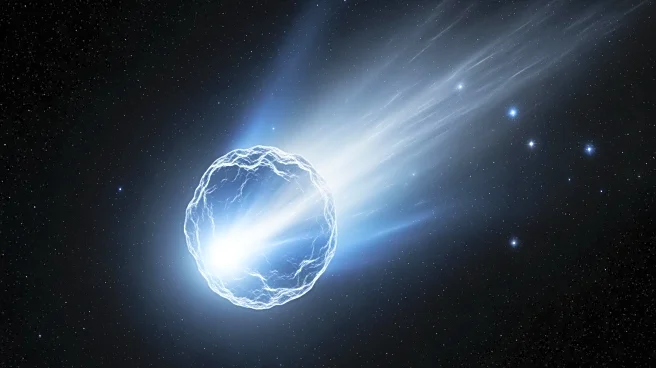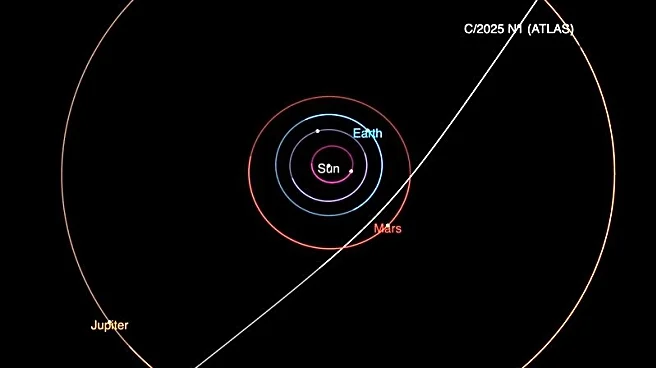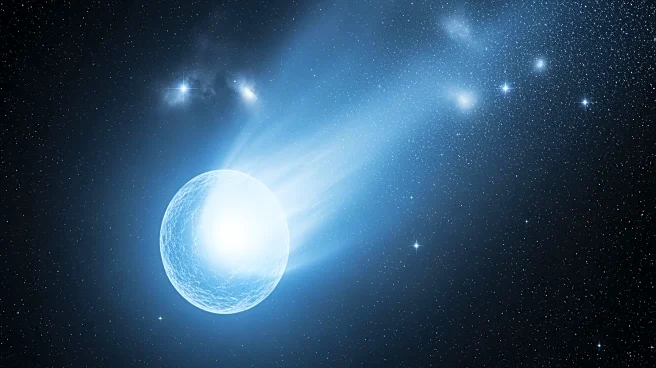What's Happening?
NASA has confirmed that the object known as 3I/ATLAS is an interstellar comet, marking it as the third such object to visit our solar system. Discovered in July 2025 near Jupiter, the comet has been closely
monitored by scientists as it travels through the solar system. It made its closest approach to the sun in late October and is expected to be closest to Earth in December, although still 167 million miles away. The comet's origins are speculated to be from a solar system older than our own, providing a unique opportunity to study the deep past of the galaxy. NASA has released new images and data, enhancing the understanding of this celestial body.
Why It's Important?
The confirmation of 3I/ATLAS as an interstellar comet is significant for the scientific community, as it offers a rare glimpse into the materials and conditions of ancient solar systems. This discovery could provide insights into the formation and evolution of solar systems, including our own. The study of such objects can enhance our understanding of the universe's history and the processes that govern celestial bodies. The comet's journey through the solar system allows scientists to gather data that could lead to breakthroughs in astrophysics and cosmology.
What's Next?
As 3I/ATLAS continues its journey, scientists will have the opportunity to study its composition and trajectory further. The comet is expected to be closest to Earth on December 19, 2025, before heading towards Jupiter. NASA and other space agencies will continue to monitor and analyze the data collected, potentially leading to new discoveries about interstellar objects and their impact on our solar system. The ongoing research may also inspire future missions to study similar objects in greater detail.


